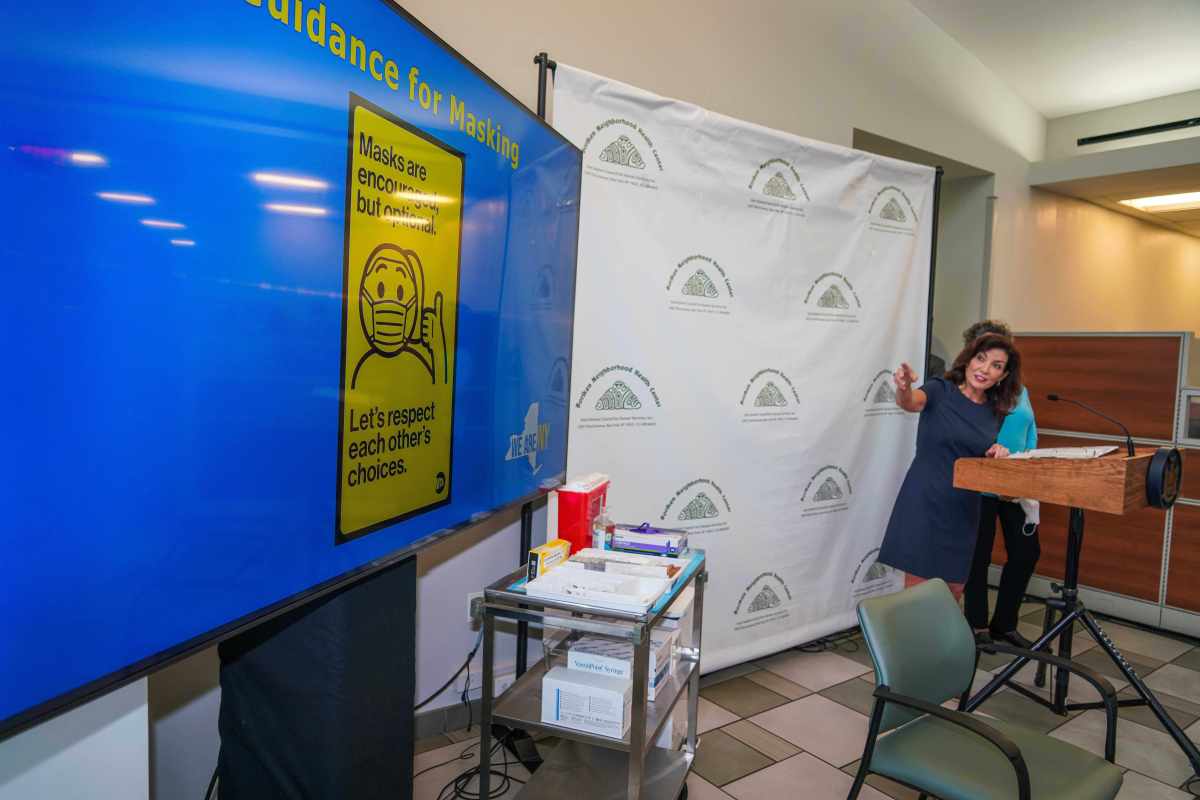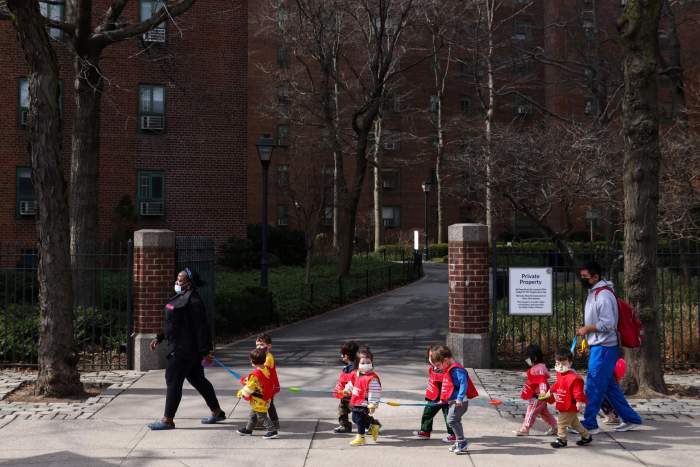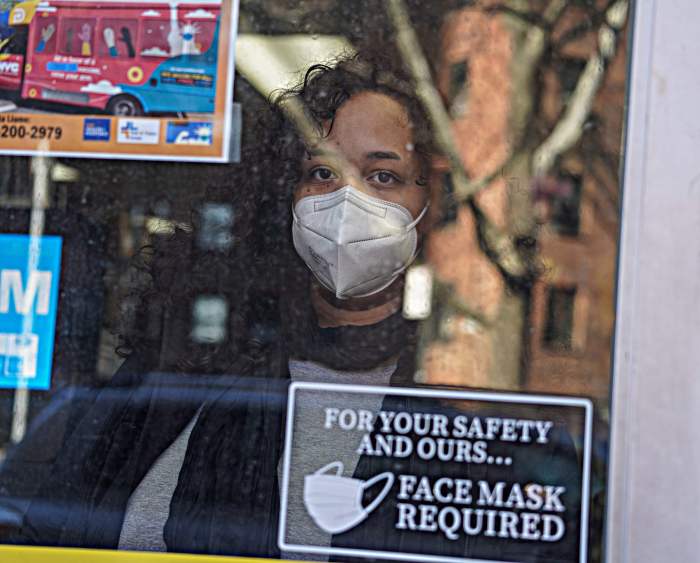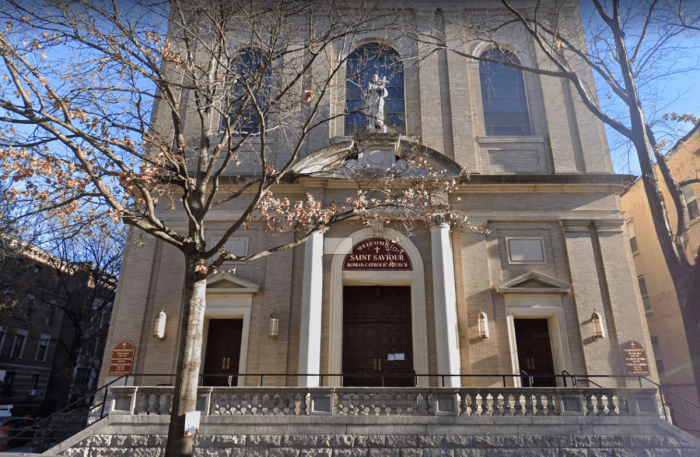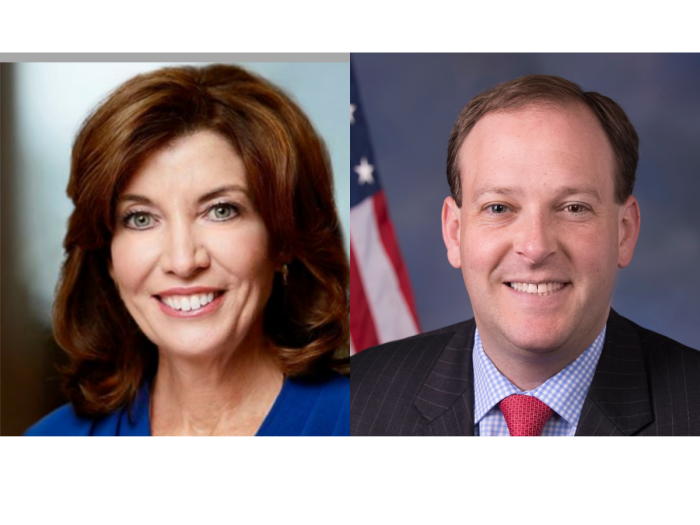Face coverings are no longer required in mass transit after Governor Kathy Hochul lifted the nearly two-and-a-half-year-old COVID-19 pandemic mask mandate Wednesday.
The governor kept the rule up for four months after a federal judge struck down the order for masks in transit on a national level in April.
“We have to restore some normalcy to our lives,” the governor said during a COVID briefing in East Harlem on Sept. 7. “Masks are encouraged but optional.”
Hochul shifted the state’s public health guidance to a focus on individual choice, noting that New Yorkers should remain respectful of straphangers who still opt to still don the coverings.
“Let’s respect each other’s choices,” Hochul said. “You choose not to have a mask, that is your personal decision. You’ll do your own personal risk assessment of who you’re exposed to, your own vulnerabilities, where you work — you make your own determination — but do not judge your fellow passengers on what their choices are.”
The governor had hinted on Tuesday that she would announce an update on the policy “very shortly” when asked about it by amNewYork Metro.
Earlier in June, the state’s chief executive was unsure about dropping the mandate as COVID infections and hospitalizations increased again driven by subvariants of Omicron, saying she wanted straphangers to feel safe for their health.
But coronavirus case rates stabilizing and commuters returning to work and school after Labor Day pushed the needle toward making masks optional, she said.
“People are getting back to work and they’re getting back to school, and while you’re in those places not wearing a mask, it makes sense to not worry about it on the way,” she said.
The mandates will remain intact for healthcare and adult care facilities across the state.
The Staten Island Ferry will also no longer require masks on board, announced the city’s Department of Transportation, which runs the maritime service.
Former Governor Andrew Cuomo first required masking in the state’s public transportation network and stations via executive order at the beginning of the COVID outbreak in April 2020.
Flaunting the law could cost $50 in fines, and transit and police officials touted enforcement blitzes targeting maskless riders.
NYPD enforcement was lax and compliance slipped continually, from about nine in 10 subway riders wearing the masks properly in April 2021 to less than two-thirds a year later, when the state’s Metropolitan Transportation Authority stopped collecting the stats altogether.
“It was essentially a crapshoot when you were walking on a subway or bus to see how many people were wearing a mask,” said Lisa Daglian, executive director of the MTA’s in-house rider advocacy arm, the Permanent Citizens Advisory Council.
The agency also removed its omnipresent yellow mask posters from stations and trains in June, pivoting entirely to digital screens and its audio announcements for the public awareness initiative.
Transit officials have rolled out new signs noting that the masks are now optional but still encouraged.
Daglian praised the governor’s rule change, saying the last months have been confusing for riders who had to wear masks in trains and buses, but at few other settings.
“It takes away one less rule of the rails that was essentially unenforceable and unenforced,” she said.



